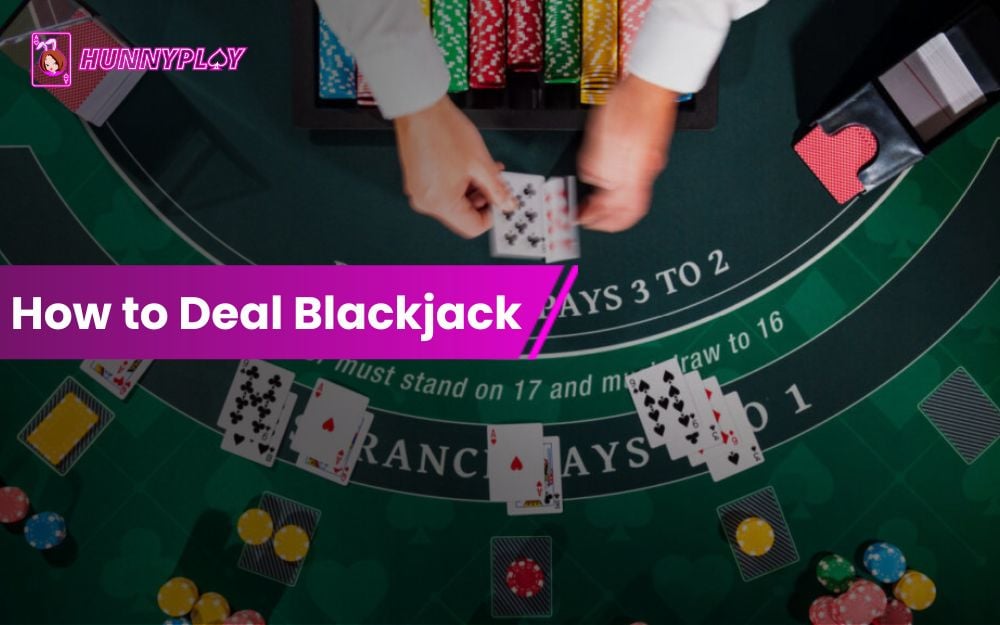How to Deal Blackjack is an art, crucial for a smooth game. HunnyPlay’s step-by-step guide covers all the essential Blackjack dealer rules and techniques to master the game. Get ready to enhance your skills and become an expert dealer.
A brief tutorial on how to play Blackjack
Step #1 – Placing bets: Each player places their bet on the table.
Step #2 – Dealing cards: The dealer deals two cards to each player and themselves. Players’ cards are face-up, while the dealer shows one face-up card (the “upcard”) and keeps the other face-down (the “hole card”).
Step #3 – Card values:
- Numerical cards (2-10) retain their printed value.
- Court cards (Jack, Queen, King) have a value of 10.
- An Ace can be counted as 1 or 11, depending on the player’s choice.
Step #4 – Player decisions: Starting from the left, each player makes decisions about their hand. The main options are:
- Hit: Ask for another card to boost the hand’s total.
- Stand: Refuse additional cards and maintain the present hand value.
- Double down: Increase the original wager and draw one more card before standing.
- Split: When dealt a pair, divide them into two individual hands with an extra bet.
Step #5 – Busting: If a player’s hand exceeds 21, they “bust” and lose their bet automatically.
Step #6 – Dealer’s turn: Once all players have completed their turns, the dealer reveals their hole card. If the dealer busts (hand value exceeds 21), all remaining players win.
Otherwise, the dealer compares their hand with each player’s hand.
Step #7 – Winning and losing:
- Players with a superior hand value compared to the dealer’s receive an even money payout on their bets.
- Players with an inferior hand value forfeit their bets.
- Players with the same hand value push (tie) and get their money back.
Step #8 – Blackjack (Natural): A Blackjack, or natural, occurs when a player or dealer is dealt an ace and a 10-value card as their initial two cards. A natural blackjack rewards at increased odds, typically 3:2.
The 8 Step-by-step guide on How to Deal Blackjack
Blackjack is straightforward for players, but dealing involves many nuances. To help you master this role, we’ve created a detailed step-by-step guide on How to Deal Blackjack, covering all the essential dealer rules.
Placing bets: Setting the stage
Before dealing the cards, ensure all players have placed their bets. This occurs after shuffling and cutting the cards but prior to the deal.
Players who wish to participate must place their chips in the designated circle or box in front of them. If the table lacks these markings, players can place their chips next to the area where their cards will be placed.
Players who do not place a bet before dealing starts will not receive any cards and cannot participate in the round.
As the dealer, you do not need to place any bets since you represent the house. In a home game, players should rotate the dealer role after each hand, allowing everyone to experience dealing.
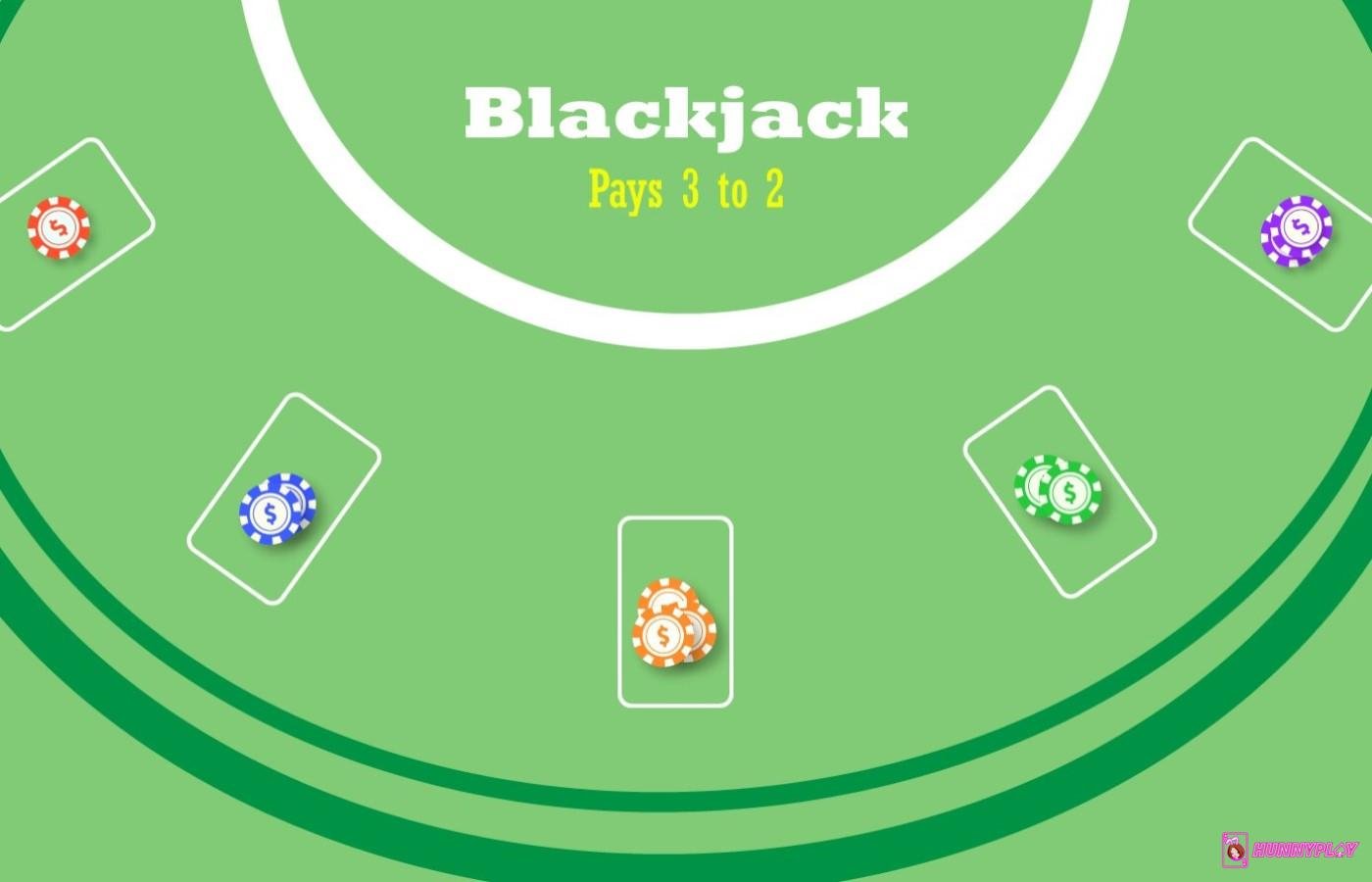
Have players place their bets (Source: Internet)
Distributing the first card
After players have placed their bets, begin dealing. Proper Blackjack dealing involves distributing cards from left to right.
How to Deal Blackjack? Take the top card from the deck (or the first card from the Blackjack shoe if you’re using one) and deal it to the leftmost player at the table.
Gently slide the card across the table, turning it face up as you do so. Position the initial player’s card in the assigned area in front of them. Repeat this process with each player until everyone has one face-up card.
Whether you’re dealing at home or in a professional setting, remember that only the dealer touches the cards. Players are not permitted to touch their cards, even to adjust them.
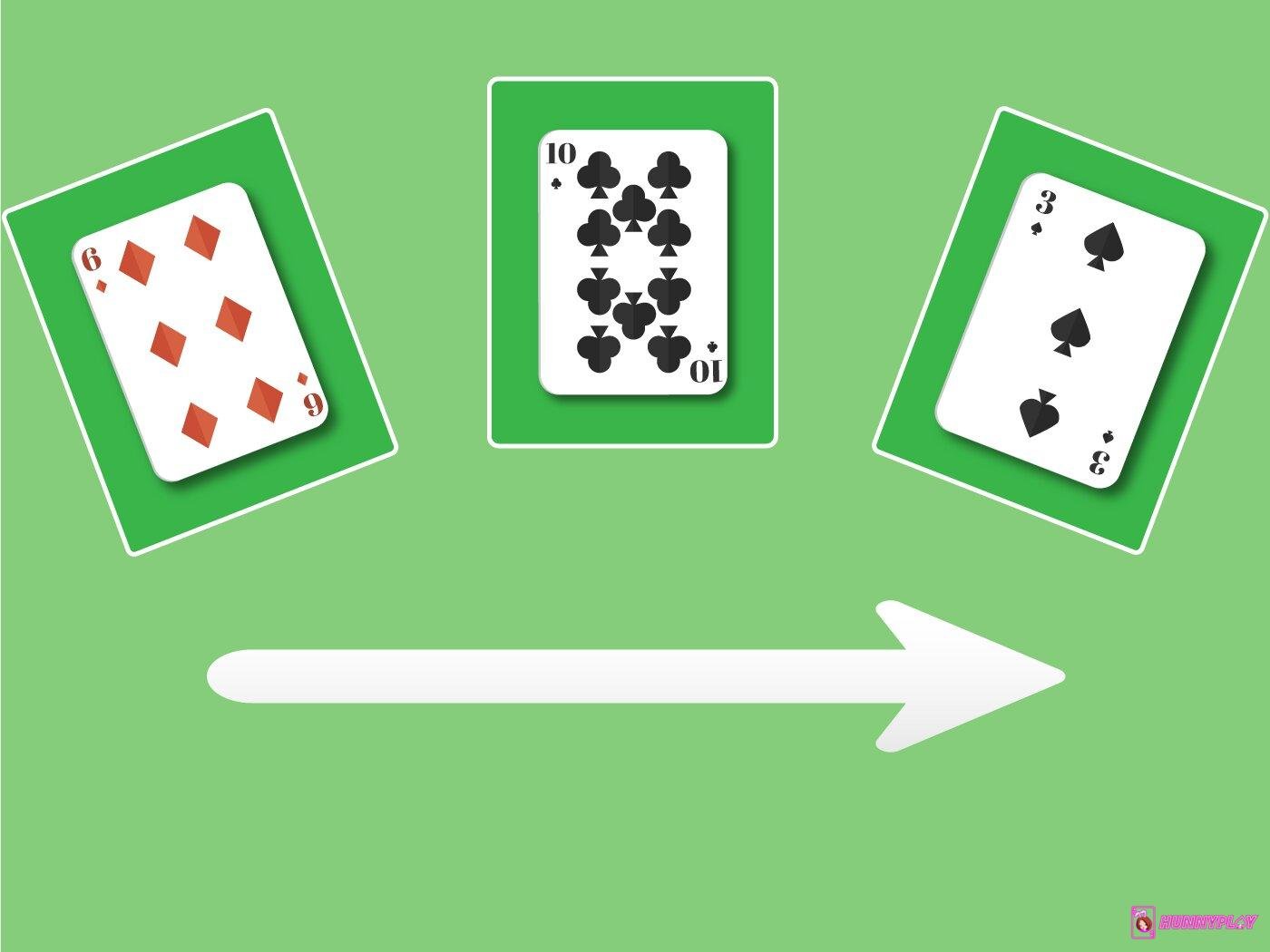
Deal one Face-up card to every player (Source: Internet)
Concealing the dealer’s card
After every player has their face-up card, it’s time for you, the dealer, to take the next step. Draw the top card from the deck or card shoe and place it face-down in front of you. It’s how to deal Blackjack popularly.
It’s crucial to keep this card hidden from all players until it’s time to reveal it. Be careful when taking it from the deck to ensure it remains unseen. At this point, you should avoid looking at the card as well.
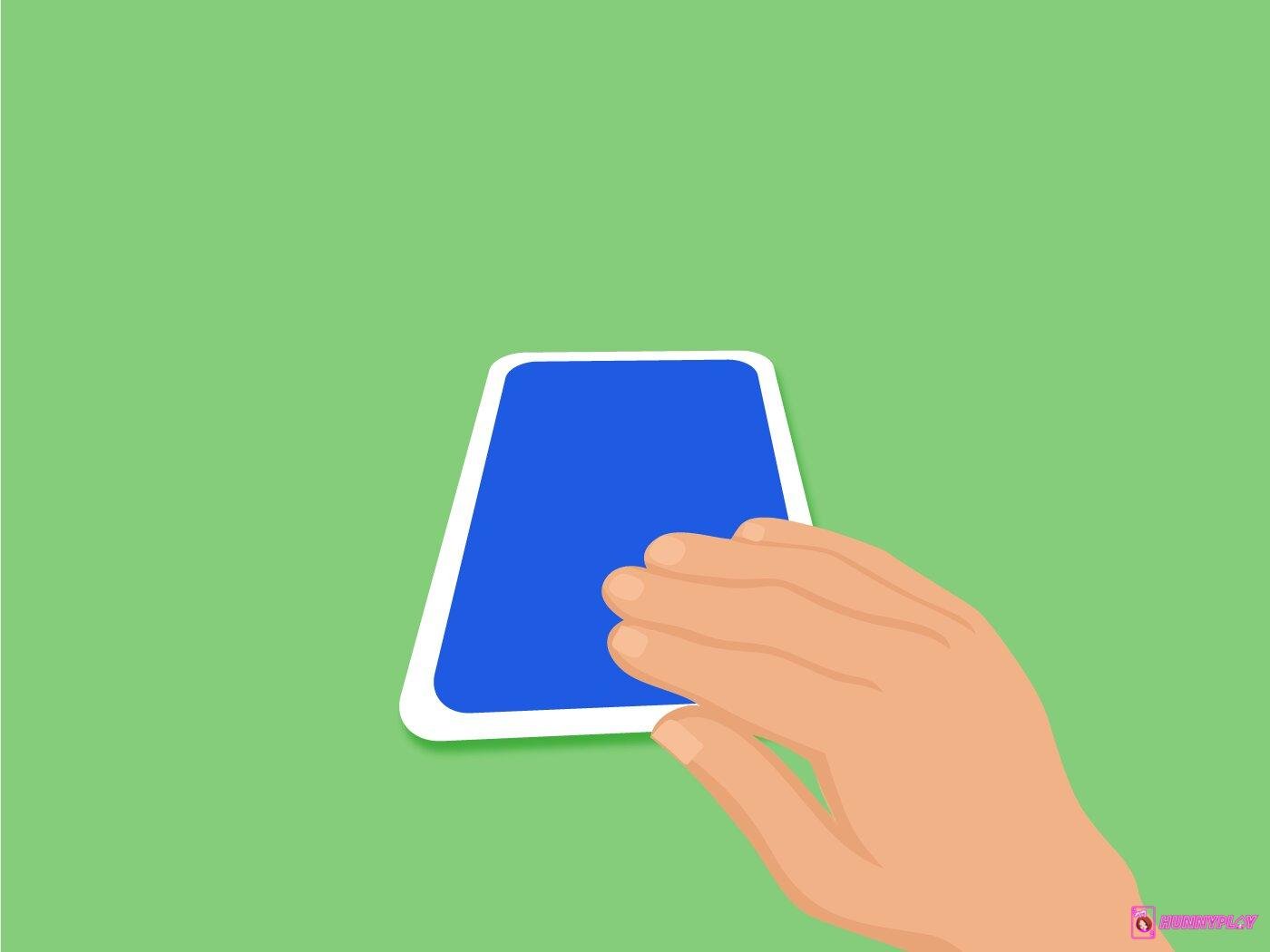
Place one Face-down card in front of you (Source: Internet)
Distributing the second card
Starting with the leftmost player, deal one more card to each player in the game. Deal the cards in the usual manner, turning them over as you slide them.
When placing the second face-up card, set it to cover most of the first face-up card, leaving the first card’s number visible in the left corner.
This time, also deal one face-up card to yourself. Lay your face-up card atop the face-down card, concealing most of it. It’s how to deal with Blackjack in this case.
If you’re playing a home Blackjack game, it’s good to agree upfront on whether to include the insurance side bet.
Players can take this side bet if you, the dealer, show an Ace as your face-up card. The insurance wager pays the player 2:1 if you achieve a Blackjack hand.
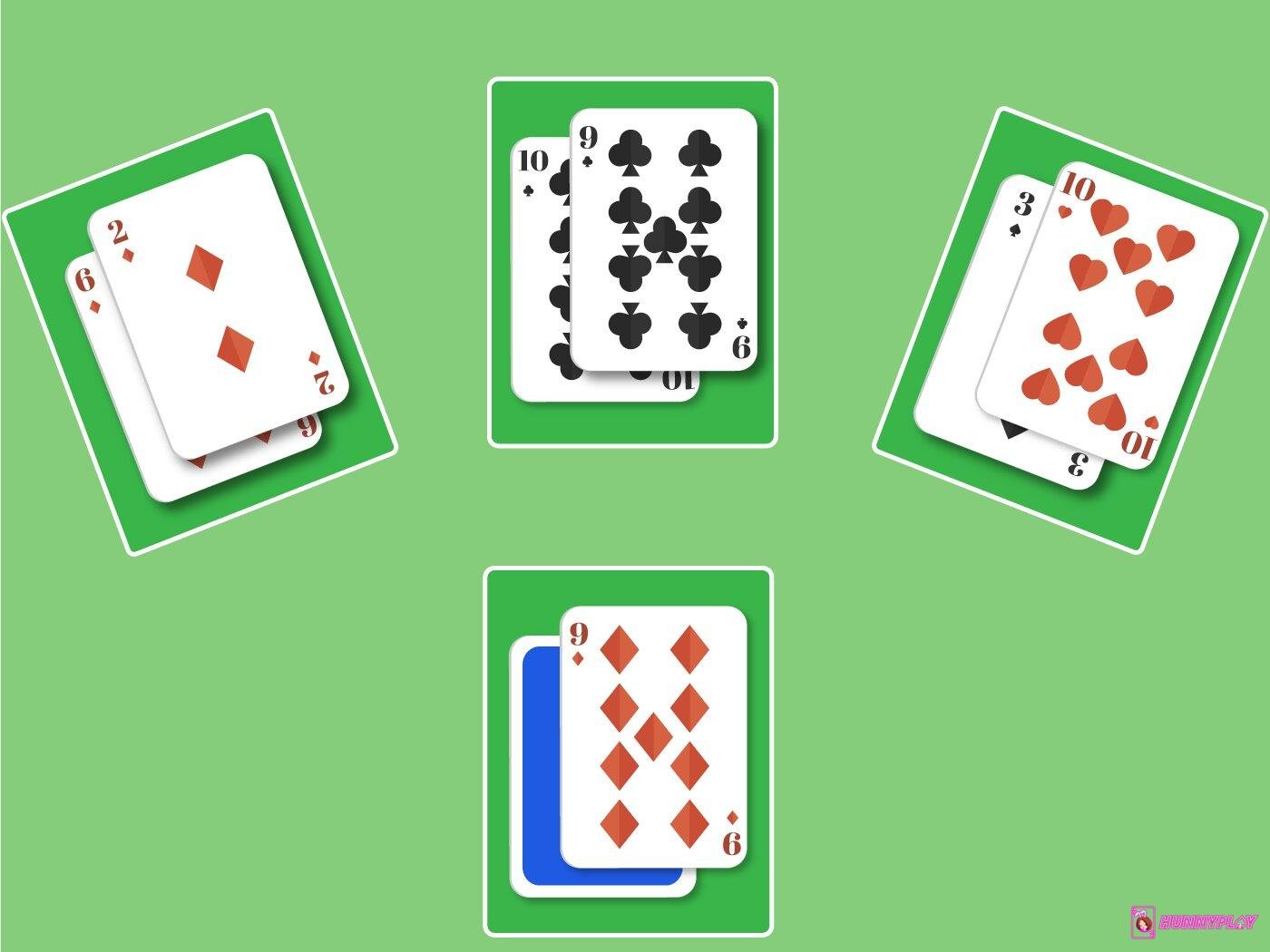
Deal the second Face-up card to everyone (Source: Internet)
Handling player decisions
Now that every player has two face-up cards, it’s time to proceed to the decision-making part of the game. Begin with the first player on your left.
Based on the strength of their hand, the player will opt to stand, hit, double down, split, or surrender:
a. If the player wants to stand
If the first player is happy with their two-card total and decides to stand, move on to the next player. A player who stands will not receive any additional cards.
b. If the player wants to hit
If a player chooses to hit, they want you to give them another card. Place each subsequent card in the same manner as the first two cards.
- A player can hit as many times as they want, as long as they don’t exceed 21. For optimal decision-making, players should follow proven tips and strategies on when to hit in Blackjack and have a handy strategy chart.
- If a player busts (goes over 21), collect their money. Move to the next player once a player stops hitting or busts.
- In most casinos, dealers also take the player’s cards after they bust and put them in the discard pile, but you can also leave the cards on the table until the end of the game and collect them all at once.
c. If the player wants to Double Down
- A player might decide to double down based on their two-card value. Doubling down in Blackjack means the player asks for only one additional card, after which they must stand on their total no matter what it is.
- To make this “How to Deal Blackjack” option, they must wager an amount equal to their initial bet.
d. If the player wants to split
- A player may be dealt a pair of identical value cards. When this happens, they can split the hand into two separate hands and play them individually.
- If a player chooses to split, they must match their initial bet by placing an equivalent wager. Start dealing the left hand first, playing it out entirely until the player stands or busts before moving to the right hand.
- Never deal alternately between the two hands. Note that the “How to deal Blackjack” rule pays 1:1 in this situation instead of the standard 3:2.
e. If the player want to surrender
- Some casinos allow players to surrender if they’re unhappy with their hand. If you’re playing Blackjack at home for fun, it’s a good idea to include this option.
- When a player surrenders, they forfeit their hand in return for half of their original bet. Surrendering can be a strategic move to preserve their bankroll. There are many situations where surrendering in Blackjack is advisable.
As the dealer, collect half of their bet and move on to the next player. And that is how to deal Blackjack cards standardly.
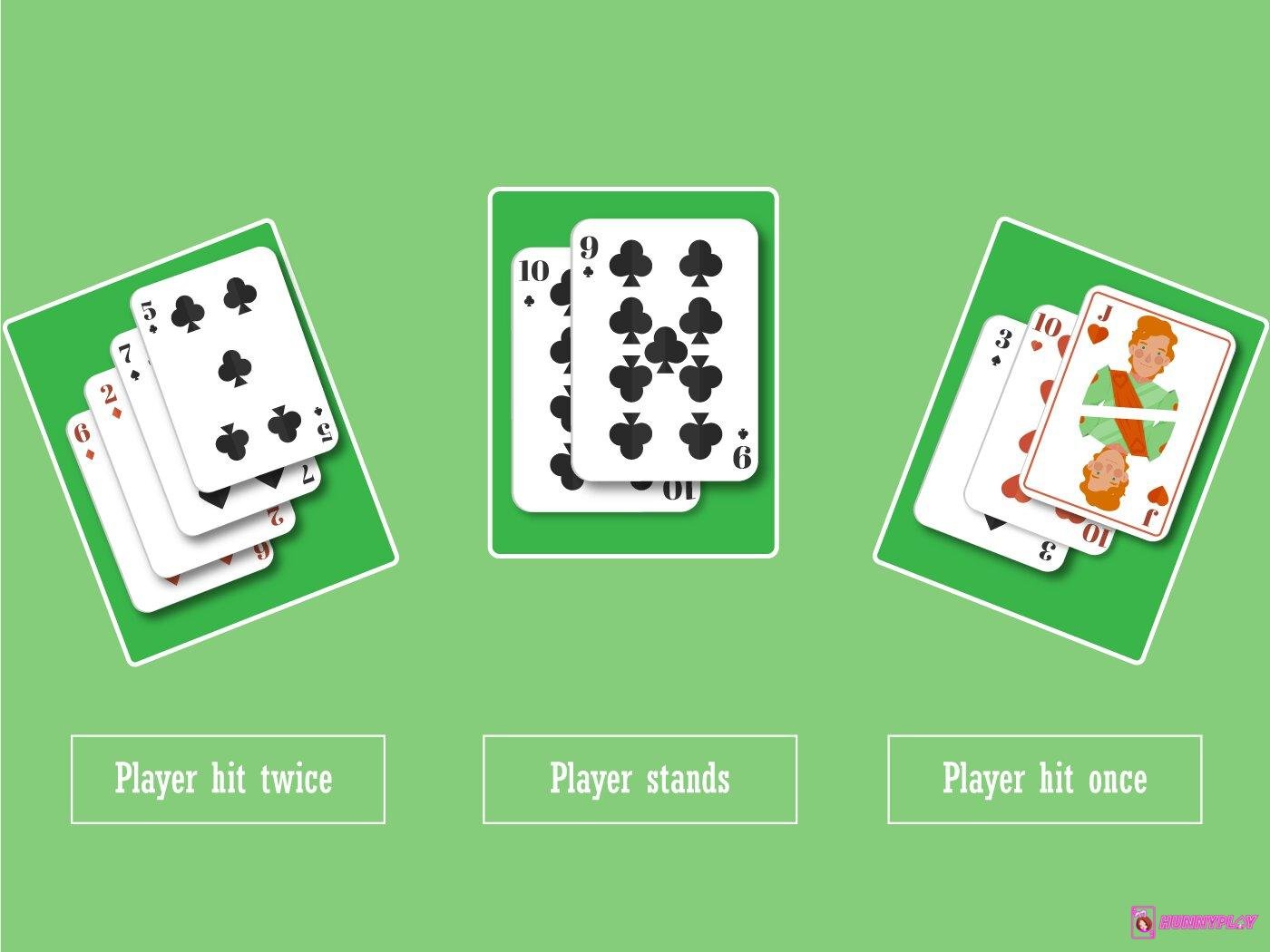
Deal additional cards (Source: Internet)
Revealing the dealer’s hand
Once all players have completed their turns, it’s time for you to disclose your hand total. As the dealer, you’re always the last to act, giving you the house advantage.
To reveal your cards, take your face-up card and lightly sweep it under the face-down card while turning it at an angle. This flips the face-down card over in one motion, showing your two-card total to everyone at the table.
As the dealer, you cannot arbitrarily choose when to hit or stand. There are predetermined “How to deal Blackjack” rules you must follow.
The general rule in both land-based and online casinos is that the dealer must hit on any total of 16 or less. You can only stand if you have a total of 17 to 21.
However, if you’re playing at home, decide whether the dealer should hit or stand on a soft 17. For reference, most casinos require the dealer to hit on a soft 17 hand.
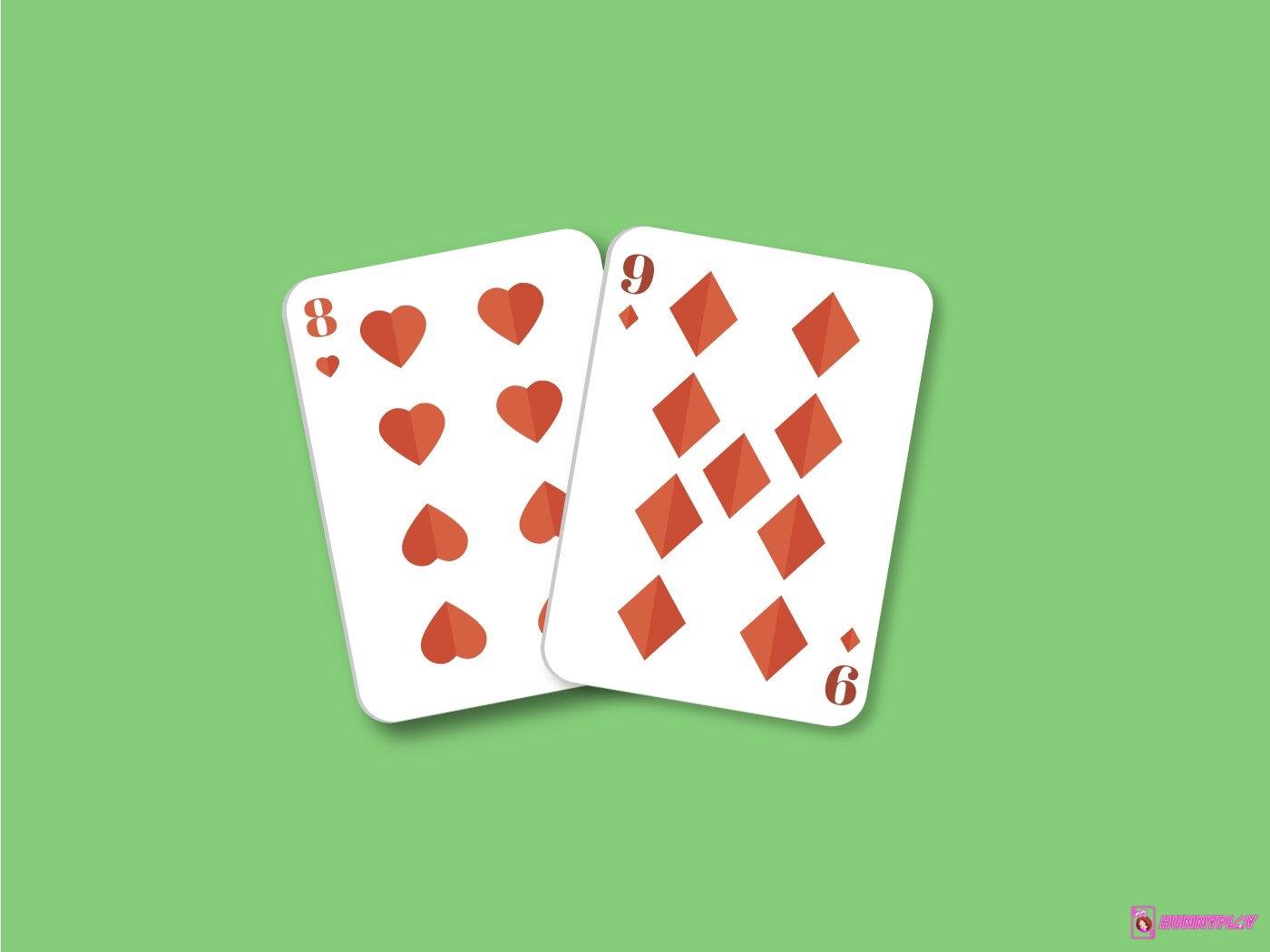
Show your Face-down card and make your hand (Source: Internet)
Evaluating hands to declare the victor
The final step in the “How to Deal Blackjack” guide is comparing your hand with those of the remaining players to determine the winners. After playing your hand according to the dealer rules, it’s time to see which players have stronger hands.
Begin with the player on your left and contrast their hand with yours:
- Higher-Valued Hand: If the player has a higher-valued hand, pay them 1:1, meaning their payout equals the bet they placed at the beginning of the round.
- Push: If the player’s total matches yours, it results in a push. Here, it’s a stalemate, and the player retrieves their original wager.
- Blackjack: If a player has a Blackjack (a two-card hand worth 21), pay them the predetermined house payout, typically 3:2 at most casinos.
After comparing your hand and paying the player if necessary, proceed from left to right until you’ve compared your hand with all the players in the game.
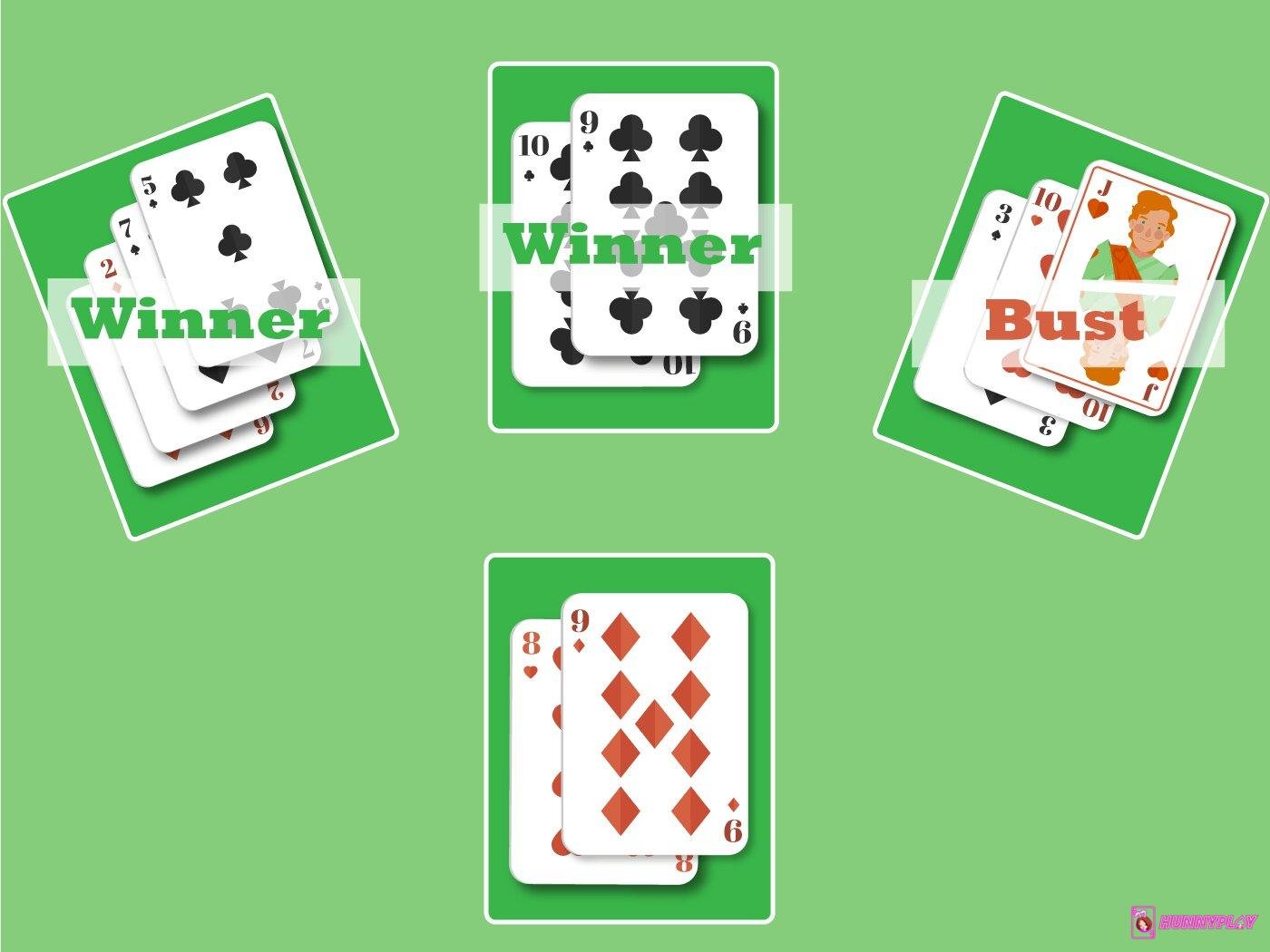
Compare hands to determine the winner (Source: Internet)
Gathering all cards to end the round
After paying the players and settling all bets, it’s time to end the round by collecting all the cards on the table.
Initially, clear your cards from left to right. Then, starting with the rightmost player’s hand, collect all the face-up cards from right to left. Skilled Blackjack dealers can collect all the players’ cards in one smooth, sweeping motion.
As you gather the cards used in the round, place them in the discard pile on your right. In casinos, dealers use a dedicated discard tray for this purpose.
If you’re playing single-deck Blackjack, you can put the cards back in the deck and reshuffle.
To start a new round, revert to step one of this guide and repeat the process.
Impact of dealers on the “How to Deal Blackjack” process
While dealers have limited room to deviate from the casino’s “How to Deal Blackjack” rules, their manner of dealing and interpretation of some ambiguous rules can influence the game’s outcomes. Here are ways dealers can affect the game:
Adherence to rules
This is the simplest element. Dealers must strictly follow specific rules when playing their hand. These rules can vary depending on the casino and the Blackjack variant being played but are generally consistent.
How dealers adhere to these rules, such as deciding to hit or stand on certain hand values, can significantly impact the overall outcome of the game.
Decisions on Soft 17
In some Blackjack variations, dealers are required to hit on a soft 17 (a hand containing an ace valued as 11), while others require them to stand. This rule can impact the dealer’s potential hand value and, consequently, influence how players decide to play their hands.
Dealing speed
The pace at which a dealer manages the cards can influence the game. A faster dealer may result in more hands being played in a shorter period, potentially leading to increased losses or wins for players.
Additionally, the speed can differentiate experienced players from novices.
Player interaction
Dealers engage with players during the game, shaping the ambiance and setting the mood for the table.
Their demeanor, expertise, and ability to sustain the game’s rhythm can affect players’ experience and overall satisfaction. Interaction can also break players’ concentration and distract potential card counters.

The dealer’s actions and decisions significantly impact the outcome of a Blackjack game. (Source: Internet)
Essential rules to remember for winning Blackjack
Understanding the specific rules of the casino and Blackjack variant you’re playing can give you an edge over your opponents and the house. Here are some essential rules to keep in mind:
Five-card Charlie
In some Blackjack variations, there’s a “How to Deal Blackjack” rule called “Five-card Charlie.” If a player draws five cards without exceeding 21, they automatically win the round, regardless of the dealer’s hand.
Double Exposure
In the Double Exposure variant, both of the dealer’s cards are dealt face-up. This gives players more information about the dealer’s hand but comes with adjustments like the dealer winning on ties or specific restrictions on player actions.
Surrender
Some Blackjack variations provide the option to “surrender” a hand. This allows players to forfeit half of their bet and exit the round if they believe they have a weak hand, thus minimizing potential losses against a strong dealer hand.
Bonus payouts
Some casinos provide additional bonus payouts for specific card combinations. For example, achieving a certain combination of suited cards, like an ace and jack of spades, can result in an extra payout.
Side bets
Side bets are optional wagers made alongside the main Blackjack game. These wagers are separate from the main hand and typically involve forecasting specific outcomes, like the player’s initial two cards or the total count of cards in a round.
A popular example is the Super 7 side bet, which can pay out up to 5,000 to 1 for three suited 7s.
How to Deal Blackjack – FAQs
Q: Does the dealer hit on 16?
A: Yes, if the total is 16 or under, the dealer must take a card. The dealer continues to take cards until the total is 17 or more, at which point they must stand.
If the dealer has an ace, and counting it as 11 brings the total to 17 or more (but not over 21), the ace is counted as 11 and the dealer stands.
Q: What happens if the dealer and player get 21?
A: A player total of 21 on the first two cards is called a “natural” or “blackjack,” and the player wins immediately unless the dealer also has one, resulting in a tie.
In the case of a tie (also known as a “push” or “standoff”), bets are returned without adjustment.
Q: What happens if both the dealer and player bust?
A: In blackjack, the game favors the dealer. If both you and the dealer bust (exceed 21), you lose. Despite this, many players win money at the blackjack tables, and there are numerous experts and strategies to help improve your chances.
Conclusion
Mastering how to deal Blackjack involves understanding the rules, handling cards with precision, and creating a positive atmosphere at the table.
By following this guide, you can enhance your skills and improve the gaming experience for players. For more tips and to practice your dealing skills, visit HunnyPlay, where you can join a community of passionate players (and dealers).





















